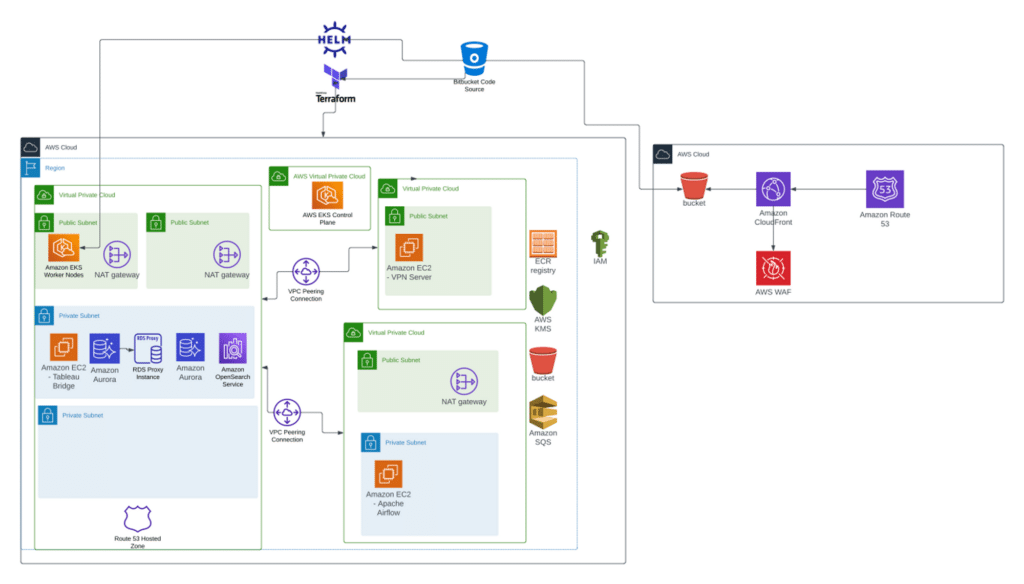Cachet: Financial Services Marketplace for Gig Workers
Cachet is a financial services marketplace for gig workers; they aggregate and enrich cross-market data from gig platforms to enable businesses like insurance companies to sell better-priced and personalized coverage based on workers’ actual work hours. In 2022 investors supported their goal to build and scale tailor-made insurance products and services for platform workers by backing them with €5.5m in investment.
The Problem
Cachet faced reliability issues caused by the need for more visibility of its IT infrastructure and unreliable monitoring. As a result, they were experiencing system outages and performance issues, impacting their ability to serve their customers effectively.
In the gig economy, where speed and responsiveness are critical, downtime and slow response times can be costly. Cachet’s customers depend on the reliability of their systems to file claims and receive timely responses. However, the previous state of their IT infrastructure needed to be improved to maintain the necessary level of reliability, leading to decreased customer satisfaction and potential loss of revenue.
The lack of visibility into their IT infrastructure made it difficult for Cachet to identify potential issues before they become significant
problems. Additionally, unreliable monitoring made it hard to track the performance of the systems and ensure they are operating at optimal levels. Therefore, it was essential for Cachet to address these reliability issues and provide customers with a reliable and efficient IT infrastructure that could support their needs.
Solution and Architecture
Cloudvisor, as a trusted advisor for the company, suggested shifting from traditional IT development and support to modern, DevOps-based development and support practices tightly integrating product development and infrastructure support. Understanding that the change is significant (until then, application development and IT infrastructure were managed separately), it was agreed to shift, learn from the process, and adapt gradually.
In this project’s scope, we concentrated on underlying IT infrastructure reliability and visibility. Based on our experience, we knew that by introducing the most basic DevOps practices, we would be able to solve the current infrastructure issues and lay the ground for company-wide integrated DevOps practice.
First, we made a couple of key design decisions before moving forward:
- Infrastructure deployment will be done automatically by utilizing the Infrastructure-as-Code approach and Terraform as a tool;
- Based on best practices, Development, and Production environments will be separated;
- And any changes and developments in those accounts will be managed by automated/semi-automated pipelines that are simple and easily maintainable.
The architecture of a Production account on AWS:

CI/CD was implemented using Bitbucket pipelines and deployments. Each deployment collects a set of environment-dependent variables. Pipeline execution is based on a “tag” trigger, according to version build, and deploys the application to the environment.
Development flow is based on server naming approach and deploys the infrastructure in micro-segments: Generic network (common across all environments and VPC peered with each one of the environment VPCs), Network module (environment specific), Frontend module (environment specific), AWS EKS module (environment specific), Database module (environment specific), Services module – buckets, AWS ECR, AWS KMS, AWS IAM (environment specific), AWS EKS module (environment specific), OpenSearch module (environment specific).
We have refactored systems logging and monitoring (based on ElasticSearch ELK stack) to an Amazon-managed Opensearch and implemented tailor-made monitoring and alerting solution that showed significant positive results regarding general reliability and performance.
Metrics for Success
Within this project’s scope, we achieved a significant shift towards DevOps-based systems development. Newly implemented Infrastructure-as-Code and CI/CD for infrastructure deployment practices allowed the customer to react quickly to infrastructure changes while maintaining the desired standardization, reliability, and security level.
By introducing AWS-managed, highly available, scalable services like Amazon Opensearch and combining those with our knowledge and experience in building tailor-made observability solutions, the customer is confident that their core applications are continually monitored, and the operations team can trust the data, act proactively and identify potential issues before they turned into major problems.
Ready To Find Out Why Over 300 Startups Like Cachet Trust Cloudvisor?
Cachet chose to work with us because we think like a startup and have a leading DevOps team. We understand startups’ unique pain points and the importance of rapidly adopting effective solutions without getting bogged down in unnecessary bureaucracy.
How can we help you take your AWS implementation to the next level? Schedule a call with our team today and discover it! Contact Cloudvisor today and get the most out of AWS.


